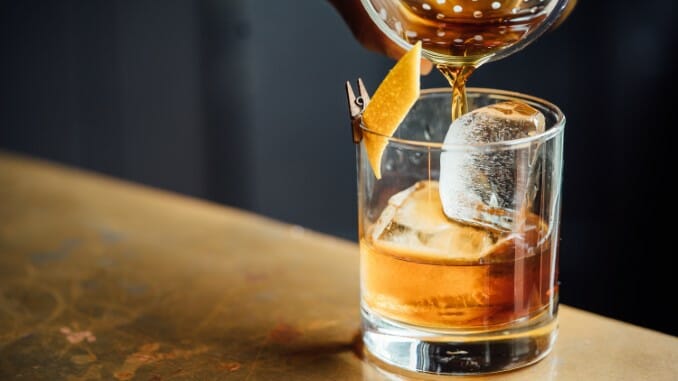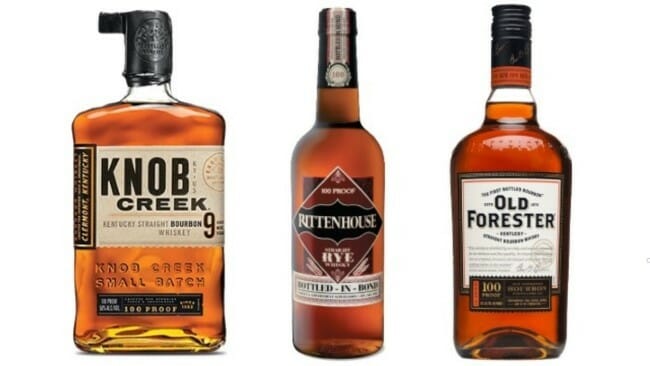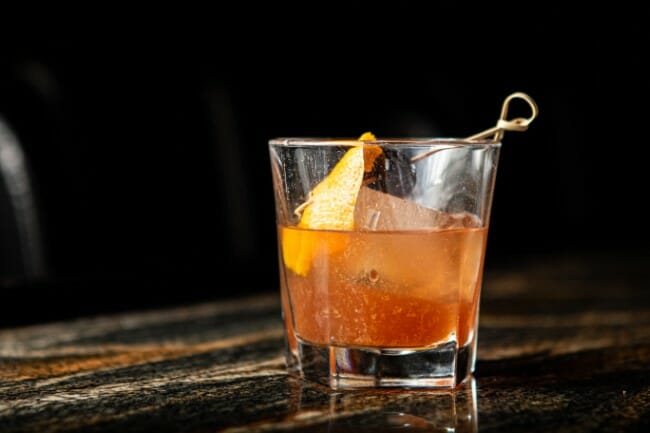Cocktail Queries: What Makes for the Perfect Old Fashioned?
Photo via Unsplash, Adam Jaime, Paige Ledford Drink Features cocktails
Cocktail Queries is a Paste series that examines and answers basic, common questions that drinkers may have about mixed drinks, cocktails and spirits. Check out every entry in the series to date.
We’ve covered a lot of ground in our Cocktail Queries series in the last few years at Paste, answering commonly asked questions about making home cocktails, as well as diving deep into individual spirits to explore topics like the best bourbon under $30, or defining the house styles of iconic Kentucky whiskey distilleries. Now, we’re drilling down on the “cocktail” in the title with this subseries on individual, classic cocktails, in order to answer the question of what makes for a great example of one of these drinks. What’s the key to a great old fashioned, for instance? A great Manhattan? A great daiquiri? A great negroni? We’ll explore them all, and then some.
There’s really no other place to start, though, than with the old fashioned. Arguably the first drink to ever be described with the word “cocktail” in the early 1800s, it formed the initial mold of what an American cocktail was meant to be. By the mid 1800s, this combination of spirits, bitters, water and sugar was ubiquitous and increasingly complicated, being crafted in a multitude of ways, and with ever more varied array of ingredients and liqueurs. As noted by cocktail historian David Wondrich, it was this increasingly complex nature of the drink that eventually led to a revival of its more simple construction, along with the name “old fashioned.” The drink has been reliably with us for the two centuries since, waxing and waning with popularity during different periods, but especially popular from the mid-2000s onward, thanks to both Mad Men and the American cocktail bar revival. It is the epitome of both adaptability and staying power.
So with that said, what goes into the making of a really great old fashioned?
The Recipe
A stock-standard, center of the bullseye recipe for your classic old fashioned is as follows:
— 2 oz whiskey (bourbon or rye)
— ½ teaspoon sugar, or .5 oz simple syrup
— 2-3 healthy dashes aromatic bitters (Angostura or other)
— 1 teaspoon water
Add sugar, bitters and water to a glass and stir/muddle to combine. Fill glass with ice cubes, or one large cube, and add whiskey. Stir gently to combine all elements. Garnish with optional fruit (orange, maraschino cherry), expressing oil of the orange peel above the glass if desired.
It really is that simple. The devil, however, is in the details.
Old Fashioned Ingredients
Whiskey
The first, and probably most pertinent, question to answer when you’re making an old fashioned is what you’re going to choose as your base spirit. Unlike say, a daiquiri, which is by definition a rum drink, the style of whiskey used in making an old fashioned is more a matter of taste. Indeed, certain areas of the U.S. don’t even hold themselves exclusively to whiskey—in Wisconsin in particular, brandy old fashioneds are so ubiquitous that if you simply order an “old fashioned” at some bars it may be automatically made with brandy rather than whiskey. For this reason, it’s often best to specify your preferred base spirit when you’re ordering an old fashioned at a bar.
For homemade cocktails, though, the classical choices typically boil down to either rye whiskey or bourbon. Of the two, rye whiskey is perhaps the more historically minded pick—rye is often associated with classic whiskey cocktails because it tends to be a bit less sweet and unctuous than American bourbon, leading to more easily consumed cocktails that run less a risk of being saccharine. The old fashioned is, by nature, a sweeter drink thanks to its added sugar and the common addition of fruit, so many cocktail purists will tell you that it’s best made with the spicier, drier profile of rye.
With that said, I’d wager a guess that with the ongoing popularity of bourbon in the U.S., more old fashioneds are being made on a daily basis with bourbon rather than rye. American consumers tend to like sweeter drinks, and good bourbon does result in a very satisfying, more decadent version of the old fashioned. This is all to say the following: If you want a richer old fashioned, try making it with bourbon. If you want a less decadent, spicier version, go with rye whiskey instead.
As for which specific whiskeys to seek out, it’s often a good idea to start from a place of strength—100 proof or more. Given the significant degree of dilution that will be present in an old fashioned that is built over a glass full of ice, stronger bourbon and rye will result in a drink that retains its character even when significantly diluted. On the bourbon side, consider something like Knob Creek, or Old Forester Signature 100 Proof. On the rye side, 100 proof Rittenhouse is a classic choice. Of course, if what you’re after is an easy drinking “weeknight” old fashioned, then 80 proof whiskeys will always be there for you.
 Classic, easy, affordable, 100 proof choices for a classic old fashioned.
Classic, easy, affordable, 100 proof choices for a classic old fashioned.
Sugar and Bitters
It doesn’t particularly matter if you choose to use sugar cubes, granulated sugar, or syrups in making an old fashioned, but the drink does classically call for a small amount of additional sweetening. The classical method for making the cocktail often calls for a sugar cube, to be dashed in bitters and then dissolved in water, but you can combine the same ingredients via simple syrup or gomme syrup just as easily. Personally, we find the sugar cube method unnecessarily dated and inelegant, when syrups dissolve much more readily in cold liquid.
Additionally, premixed old fashioned syrups are increasingly popular these days from a wide variety of brands—some associated with specific whiskeys, such as Elijah Craig or Old Forester cocktail syrups, and some sold by bars or makers of other cocktail syrups or bitters, such as Liber & Co. Each of these premixed syrups can be radically different—some contain bitters, while others do not, and some contain essences or oils from various citrus fruits such as orange or lemon. You’ll want to determine what is or isn’t in your syrup before using one, so you’ll know if your drink will need additional bitters or fruit.
Speaking of bitters: The International Bartenders Association (IBA) definition of the old fashioned calls for classic, reliable Angostura bitters for this drink, and that’s the way you’d see it made at pretty much any dive bar. Bitters are, however, one of the easiest ways to tailor an old fashioned to different tastes. Want something more autumnal? Try some maple, chocolate or black walnut bitters in an old fashioned. Like lots of bright citrus in the drink? Orange, lemon or grapefruit bitters are the way to go. The combinations here are nearly endless.
Other Old Fashioned Tips
With your ingredients assembled, there’s a few other things you’ll want to keep in mind. We’ll tackle those quickly in bullet point form:
— You’ll want a classic old fashioned glass, also simply called a lowball glass. Contrary to what you might expect, smaller glassware is often quite helpful here. Because the old fashioned is a drink simply made with whiskey, bitters, sugar and ice, and maybe with a fruit garnish, it’s not a very high-volume drink. In order to fill a “double old fashioned” glass, you need to make a lot of cocktail, which may be far more than you really want (or should be imbibing). Whereas a traditional old fashioned glass is merely 6-8 oz in capacity, the common doubles are 12-14. This means that a classic old fashioned, made following something like the traditional IBA recipe, looks a lot more natural in a single old fashioned glass than a double. Of course you can use the double if you wish, but know that it’s going to involve drinking a whole lot of whiskey.
 You want an old fashioned that fills at least half of the glass, without requiring you to consume three shots of whiskey in one drink.
You want an old fashioned that fills at least half of the glass, without requiring you to consume three shots of whiskey in one drink.
— Despite what we said above about picking a sufficiently strong whiskey, dilution isn’t to be feared or avoided here. The old fashioned is supposed to be a cold drink that can be enjoyed over an extended period thanks to the ice in the glass, and a strong whiskey should hold up just fine after initial chilling and then sitting in the glass while you drink it for half an hour or so.
— The old fashioned should traditionally be stirred with ice rather than shaken—check out our recent piece on why we stir certain cocktails and shake others.
— Fruit garnishes are completely optional, but pretty standard in old fashioneds from bars and restaurants. If you ask us, the orange slice is a “take it or leave it” addition, as the citrus flavors can also be gained from bitters or from a variety of cocktail syrups. The addition of a maraschino cherry, however, can be very pleasant. Pro tip: Wait until the end of your drink to enjoy the cherry, to allow it to soak up the boozy flavors. Secondary pro tip: Springing for a jar of Luxardo cherries is a very worthwhile investment for the home cocktail enthusiast.
And that’s everything you need to know to start mixing that most classic of American cocktails, the old fashioned, at home.
Jim Vorel is a Paste staff writer and resident liquor geek. You can follow him on Twitter for more drink writing.